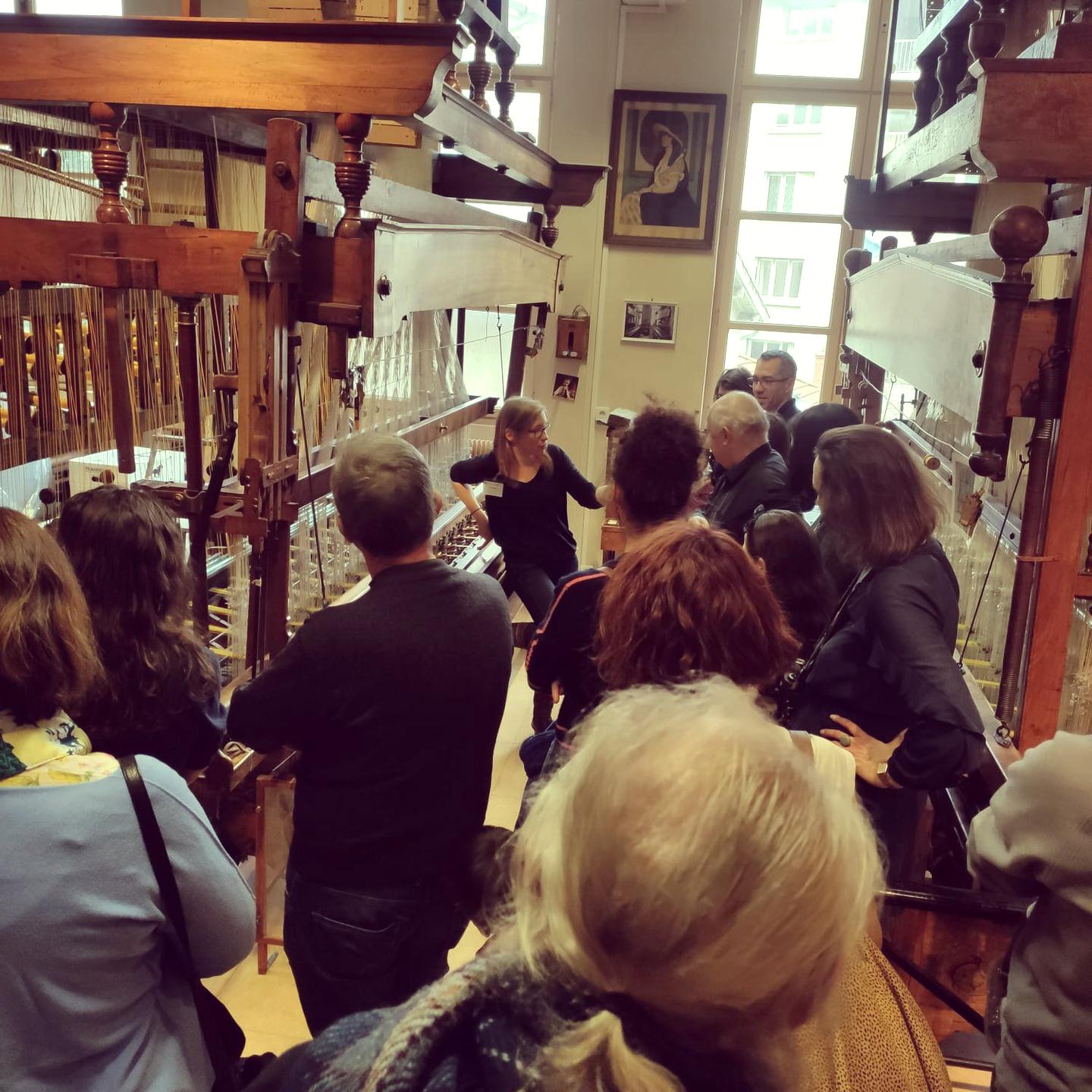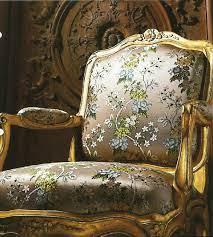The professional
weavers
A small list of textile industries and museums in Lyon and its region
The textile industries of Lyon
Manufacture Prelle
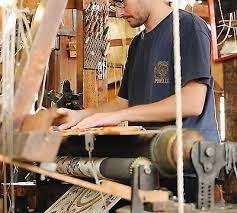 Heir to a factory already renowned in 1752, the oldest furnishing silk factory in Lyon has been weaving, since its creation, silk fabrics intended for palaces and castles such as Versailles or the Louvre and can reproduce them identically. Today.
Heir to a factory already renowned in 1752, the oldest furnishing silk factory in Lyon has been weaving, since its creation, silk fabrics intended for palaces and castles such as Versailles or the Louvre and can reproduce them identically. Today.
This personal commitment is the best guarantee of the maintenance of traditions and know-how. The great strength of the Manufacture is that it has been able to preserve ancient techniques and to allow several generations of looms to coexist, from handlooms, which are the only ones on which precious chiseled velvets, brocaded silk or gold and silver brocades can be woven, to the most modern electronic looms without sacrificing quality. nor to the beauty of the fabrics
The Weaver
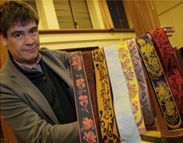
A small craft company in which Nicolas Compigne is the sole employer, the entire production chain of a fabric is carried out. The workshop occupies the niche of costume pieces for regional traditional groups. In 2014, Nicolas Compigne took over the workshop of Alain Vivier-Merle, a natural silk velvet ribbon weaver on looms dating back to 1870. A producer of woven paintings, which he would sell in Provence, Alain Vivier-Merle attracted the women of Arles. They commissioned him to make the shaped ribbons that make up the headdress of their costume. The encounter with a velvet swordswoman (Madame Faure located in Firminy), who had worked for the big names of haute couture, gave the ribbon a appreciated finish. Today, Nicolas Compigne still offers collections of ribbons to the Arlésiennes every year. Other costume accessories are made or planned with other French regions or European countries as traditional fabrics for the different regions of France, Switzerland, Italy, but also Germany .
Tassinari & Chatel, a silk factory in Lyon, offers a wide range of upholstery fabrics, silks, fabrics, etc. of incomparable quality.
The House of Tassinari and Chatel is the result of a considerable and quasi-dynastic lineage: four generations of Pernon, two generations of the Grand family, four generations of the Tassinari and Chatel families, and soon two generations of Lelièvre.
The company has now become a specialist in 'made-to-measure' creations. Its unique know-how, its workshops that have been able to mix the traditional techniques of hand looms and shuttle looms but also more modern techniques thanks to electronic looms make the possibilities of weaving almost infinite and make it possible to respond to all utopias.
Declercq Passementiers
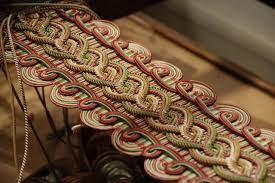 From classic to more contemporary models, all styles are represented through the collections of the house of Declercq Passementiers.
From classic to more contemporary models, all styles are represented through the collections of the house of Declercq Passementiers.
The company works in an artisanal way: 80% of the production is done entirely by hand, according to very old techniques. Design, choice of colors, manufacturing, each piece is the subject of particular care. The quality of these trimmings is recognized throughout the world.
At the service of museums and national castles for restoration work (Versailles, Fontainebleau, Chantilly, etc.), Declercq Passementiers represents the memory of this profession and knows how to remake the most exceptional pieces identically.
House Combier
French company founded in 1850. Fabric designer from the Lyon silk tradition, specialist in light fabrics and chiffon in particular, and above all fabric designers! With a rich history of more than 160 years, they add more than 2000 new fabrics to their collections every year. The entire production chain is locally controlled and offers 100% French creations. (Doissin, in the 38)
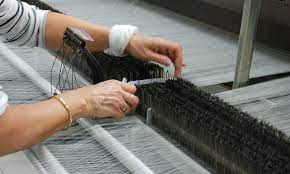

Brochier Soieries
Since 1890, BROCHIER SOIERIES has been passionately perpetuating a tradition born in the sixteenth century: the manufacture of exceptional fabrics and the printing of artists' squares in the heart of the city of Lyon. The Brochier Soieries collection contains more than 100,000 textile designs, of which more than a thousand are currently being used.
Many museums, artistsand designers use their services to offer original products.
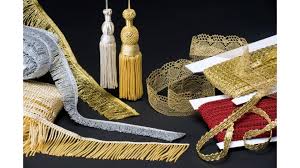
Carlhian
Since 1870, the establishment, which stems from the traditions of Lyon's silk industry, has specialised in the manufacture of gold and silver threads, braids, trimmings, etc.
The diversity and quality of the products make it possible to meet the needs of a wide range of customers: weavers, embroiderers, armies, airlines, professionals in art and liturgical ornamentation, Masonic groups, "fishing flies", decorators,
packaging, etc.
Thanks to this know-how, the products are now present on all five continents.
Lyon's
textile museums
Musée Gadagne
Classified as a historical monument, Gadagne is an emblematic heritage site of Lyon. It houses two museums: the Lyon History Museum and the Museum of Puppetry Arts.
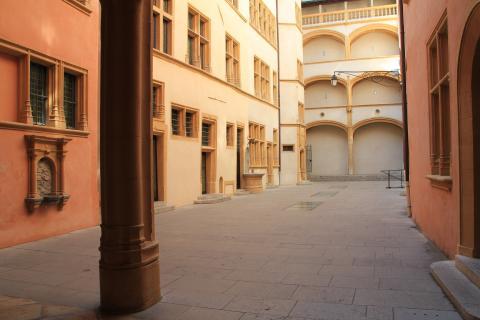 The Hôtel de Gadagne is one of the jewels of Lyon's built heritage, emblematic of its historic district, a UNESCO World Heritage Site. It is the largest building in old Lyon that you can visit.
The Hôtel de Gadagne is one of the jewels of Lyon's built heritage, emblematic of its historic district, a UNESCO World Heritage Site. It is the largest building in old Lyon that you can visit.
This historic monument features typical Renaissance architecture in Lyon: a magnificent courtyard, spiral staircases, monumental fireplaces, a painted ceiling and decorations from the 15th and 16th centuries. Hidden on the top floor, its terraced gardens are a true haven of peace. An unmissable stop in your discovery of Lyon!
Musée Soieries Brochier
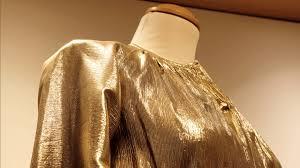
We are delighted to invite you to discover 130 years of history of a great Lyon family that found its way in silk in 1890: 4 generations, 9 Brochiers and several hundred thousand meters of woven and printed silk for the greatest names in haute couture and the arts of this century.
Discover the dresses of Hubert de Givenchy, Christian Lacroix, Valentino, Yves Saint Laurent, Nicolas Fafiotte created with fabrics from Soieries Brochier.
The works of the great masters Miró, Calder and Cocteau bear witness to the strong ties between artists and the Brochier family.
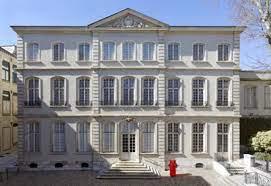
The Fabric Museum
Since their inauguration in 1864 for the Musée des Tissus and 1925 for the Musée des Arts Décoratifs, a number of treasures have been collected. These precious collections are now brought together in a single museum collection, that of the museum.
These riches come from a very important purchasing policy in the nineteenth century and from donations from the great silk houses of Lyon, enlightened amateurs and the Société des Amis, such as the pleated Egyptian tunic, the oldest preserved work, and also from important deposits from the Labor Court of Lyon, the Municipal School of Weaving or the Mobilier National, for example.
Museum of Bourgoin-Jallieu
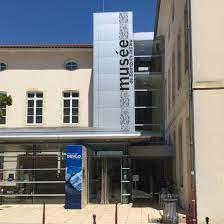 Located in the heart of the city, in the former Antonine chapel built in 1503 and the eighteenth-century Hôtel-Dieu
century, the Bourgoin-Jallieu Museum offers a museographic tour
organized around two main themes: the textile industry in
Nord-Isère and the fine arts.
Located in the heart of the city, in the former Antonine chapel built in 1503 and the eighteenth-century Hôtel-Dieu
century, the Bourgoin-Jallieu Museum offers a museographic tour
organized around two main themes: the textile industry in
Nord-Isère and the fine arts.
The museum provides a broad overview of the textile, weaving and textile industry. finishing, in Nord-Isère. It traces the history of techniques and men who have left their mark on this industrial adventure. The focus is particular focus on the evolution of printing on fabrics, the flagship industry of the Berjallian territory. From the first boards from eighteenth-century printing to the latest technologies The museum bears witness to the know-how that is passed on in the region for more than two centuries.
Saint Etienne
Museum of Art and Industry
Ribbon rooms present the preparatory work of silk, the spatial organization and symbolism of the Saint-Etienne factory, the technical and Artistic Ribbon Production and the way in which the creation of has been put at the service of ribbon making know-how. The engine rooms, offer a more technical approach. In particular, they present the innovations techniques in the field of ribbon straightening and weaving. These rooms also show the diversity of ribbon looms used in Saint-Etienne at home trimmers and the passage from contract work to factory work.
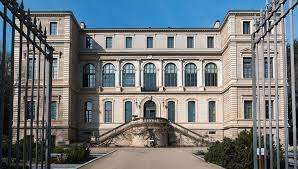
Visiting the Museum of Art and Industry allows you to immerse yourself in the history of the Ribbon making thanks to the collection of the great manufacturers of Saint-Etienne including the Hedde Brothers . A collection that has been completed over the centuries. Among other things, you will discover all the locally made models, filed with the city's Labor Court from 1812 to 1980. With its 400,000 samples, The museum is a reminder of the Saint-Etienne ribbon industry.
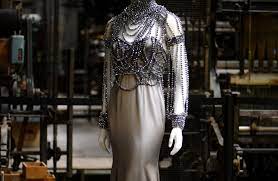
Musée des Soieries Bonnet
An unforgettable experience during which you will attend demonstrations of looms, you will exchange with former workers, you will admire unique fabrics designed for the greatest houses (Dior, Chanel...), you will immerse yourself in the operation of a factory that employed up to 1200 people. A memory of an industry of excellence, Soieries Bonnet is the largest collection of the textile industry's heritage in the world.
Luxurious fabrics, production tools and archives of the world of work, the Bonnet Silk Museum has 200 years of textile production history.
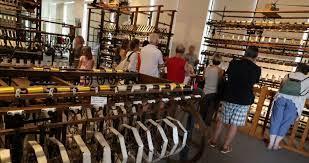
Workshop museum of Taulignan
An animated tour of machines in operation with 4 thematic areas retracing the stages of silk processing: - Sericulture
- Spinning:
From the Piedmont Tower to the steam engine, cocoon reeling.
- Milling: The twisting of the thread on working mills- Weaving: The famous "
Bis-tan-clac-pan" and the famous "Jacquard mechanics"...
Finally, two videos punctuate the visit on the origin of silk and the stages of manufacture, the rich silky past of the town through a family of entrepreneurs and the life of the workers in the convent factories in the 19th century.
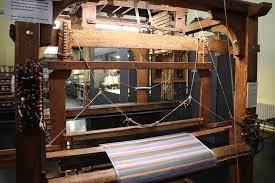
Charlieu Silk Museum
The town of Charlieu has been renowned for nearly two centuries for its exceptional silk fabrics for haute couture and luxury furniture. During demonstrations, you will discover a set of textile machines, from the nineteenth century to today's looms. The museum also presents antique silk dresses, samples of contemporary prestigious creations, testimonies of the life and work of textile people. In connection with the museum's sewing workshop, a very attractive sales shop is at your disposal.
Museum labeled "Museum of France".
Viscose Museum
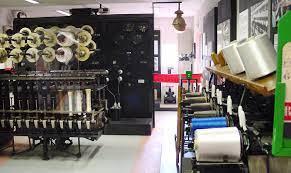
At the Viscose Museum in Échirolles, visitors discover the history of the invention of artificial silk, the process of making wood pulp with wire, and the working conditions in the factory from 1927 to 1989. He also discovers the history of the viscosiers of more than fifty different nationalities, their life in the city, the strikes and the leisure activities. With more than 3,000 objects, machines, photographs and videos, the collection is a unique resource of this industrial heritage.

House of Braids and Laces
The House of Braids and Laces is located in a former textile factory. The hydraulic installations, the trough wheel, the workshop with the old wooden weaving looms, all in working order, bear witness to a rich industrial past. In order to promote this ancient know-how, and to make it part of contemporary creation, the museum has been welcoming artists and designers since 2012, all of whom work with thread.
In addition, in order to reach a wider audience, educational activities are offered with workshops, heritage class, nature class, concerts and open-air theatre, animations, etc.
Textile heritage map
An interactive map of museums, places to visit and resources of the textile and fashion network. A project supported by the Auvergne-Rhône-Alpes Regional Directorate of Cultural Affairs and the Auvergne-Rhône-Alpes Region in conjunction with ARAC and APROMA, professional associations in the region.

bussiÈres weaving and silk museum
Weaving has existed in Bussières since the Middle Ages, when hemp and linen were woven into clothes. After the Canuts revolt in 1831, Lyonnais contractors turned to the countryside for labour. This is how silk came to Bussières.
Today, you'll be able to see the history of weaving, with a multitude of looms from different eras set to work in front of you.
Museum of the Dauphinois Weaver
The Musée du Tisserand Dauphinois presents a unique industrial heritage complex bearing witness to more than 200 years of silk weaving history in Nord-Dauphiné. But the Musée du Tisserand Dauphinois is much more than that. It is a living museum that aims to be a conservatory of memory. All machines on display are in working order and working during demonstrations. Because before being a technical museum, the Museum of the Dauphinois Weaver is that of the men who worked and still work this wonderful fabric that is silk. During the visit, warpers, ducklings, handlooms and mechanical looms are back in service to produce prestigious fabrics such as brocading, Genoa velvet, damask, lampas etc.
Brochier Soieries
La famille Brochier est ravie de vous inviter à découvrir 130 ans d’histoire qui trouva sa voie dans la soierie en 1890 : 4 générations, 9 Brochier et plusieurs centaines de milliers de mètres de soie tissée et imprimée pour les plus grands noms de la haute couture et des arts de ce siècle.
Découvrez les robes de Hubert de Givenchy, Christian Lacroix, Valentino, Yves Saint Laurent, Nicolas Fafiotte créés avec les tissus des Soieries Brochier. Lamé du Poète, Taffetas Libellule, Mousseline Madona, Satin Duchesse, autant de noms de tissus d’exception qui ont fait rêver les grands couturiers en commençant par Paul Poiret accompagné du peintre et dessinateur textile Raoul Dufy.

